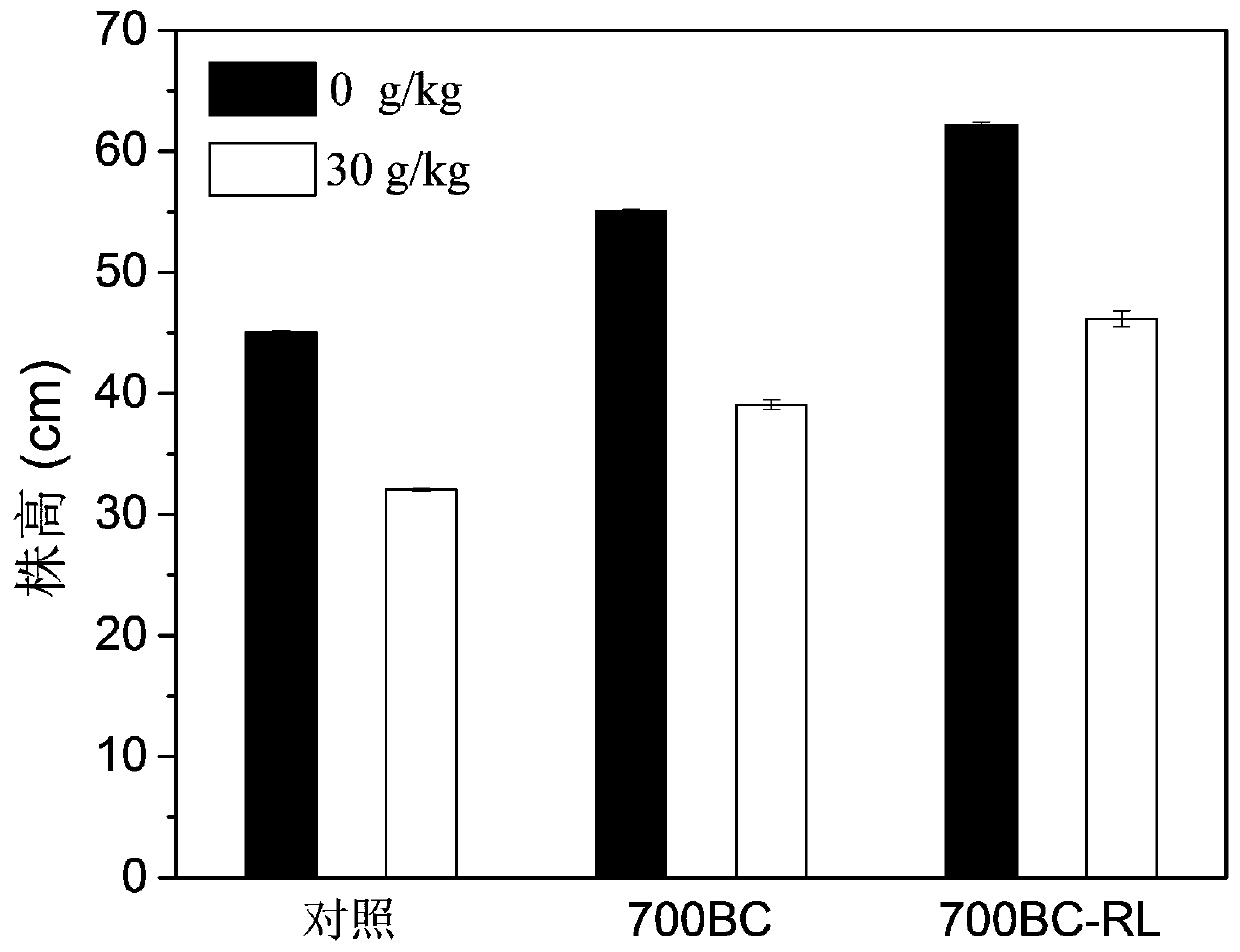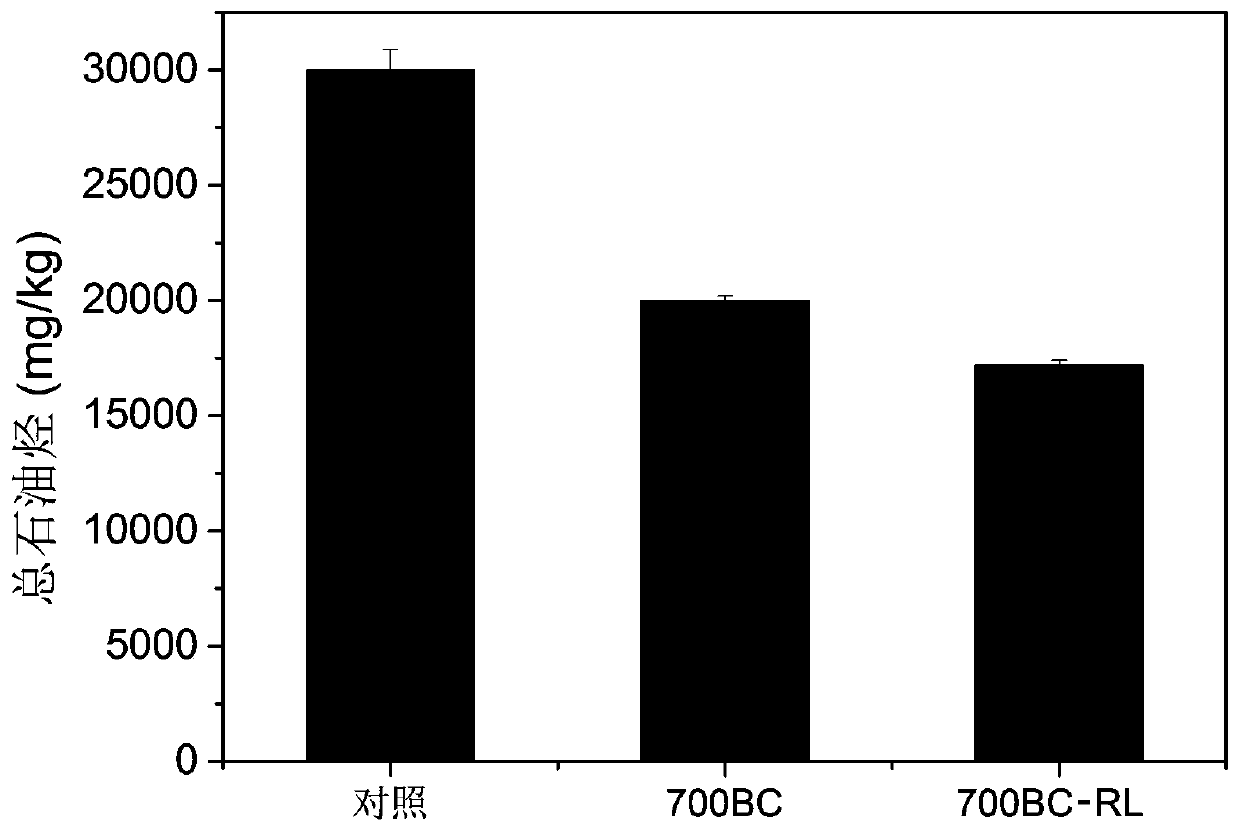Method for repairing petroleum-contaminated soil through rhamnolipid modified biochar reinforced spartina anglica
A rhamnolipid and oil-polluted technology, applied in the restoration of polluted soil, carbon preparation/purification, etc., can solve the problems of increasing petroleum hydrocarbons, low biological efficiency, and low bioavailability of organic pollutants, and achieve nitrogen fixation Strong capacity, many rhizosphere microorganisms, and the effect of restoring and improving biodiversity
- Summary
- Abstract
- Description
- Claims
- Application Information
AI Technical Summary
Problems solved by technology
Method used
Image
Examples
Embodiment
[0029] (1) The rice husk was repeatedly washed with deionized water to remove surface dust, and dried in a drying oven at 60° C. for 12 hours. Crush the washed and dried rice husks to a particle size of about 2 mm, place the crushed rice husks in a ceramic crucible (full), and use N 2 Close the lid immediately after removing the air. After sealing the crucible and lid with tinfoil paper, pyrolyze in a muffle furnace at 700°C for 3 hours with limited oxygen. The biochar obtained by pyrolysis was passed through a 50-mesh sieve, washed with 1mol / L HCl solution, and then washed repeatedly with deionized water until the pH of the biochar solution was close to neutral. Put the washed biochar in an oven, dry it at 80°C, and store it in a glass sample bottle, which is recorded as 700BC.
[0030] (2) Prepare 10mmol / L rhamnolipid aqueous solution, then add the biochar obtained in 10g step (1) and 50mL rhamnolipid aqueous solution into a 100mL Erlenmeyer flask, place on a magnetic stir...
PUM
 Login to View More
Login to View More Abstract
Description
Claims
Application Information
 Login to View More
Login to View More - R&D Engineer
- R&D Manager
- IP Professional
- Industry Leading Data Capabilities
- Powerful AI technology
- Patent DNA Extraction
Browse by: Latest US Patents, China's latest patents, Technical Efficacy Thesaurus, Application Domain, Technology Topic, Popular Technical Reports.
© 2024 PatSnap. All rights reserved.Legal|Privacy policy|Modern Slavery Act Transparency Statement|Sitemap|About US| Contact US: help@patsnap.com









